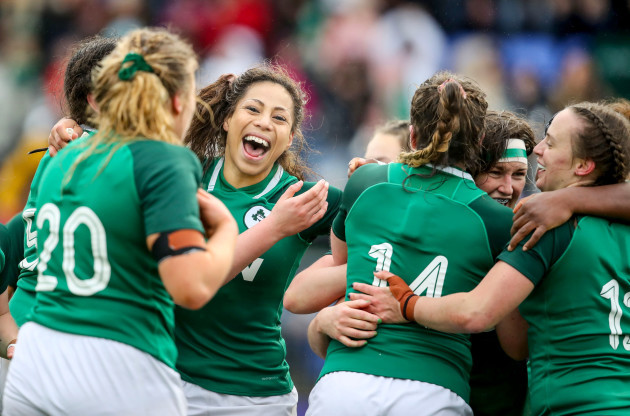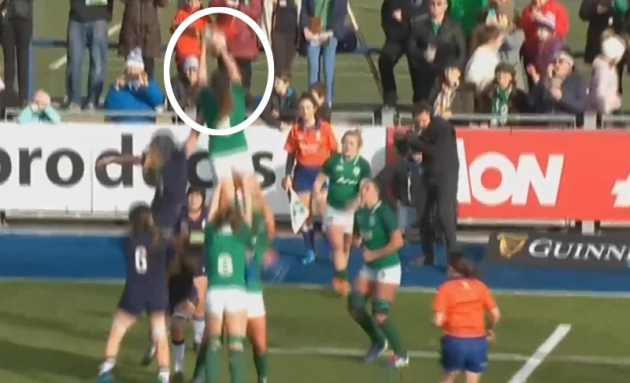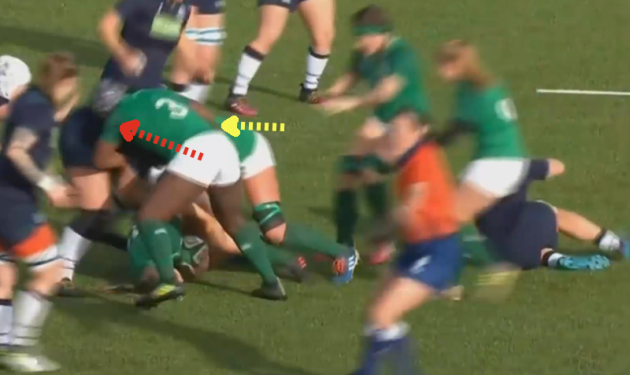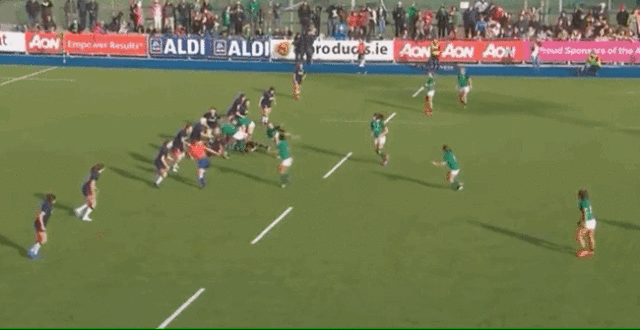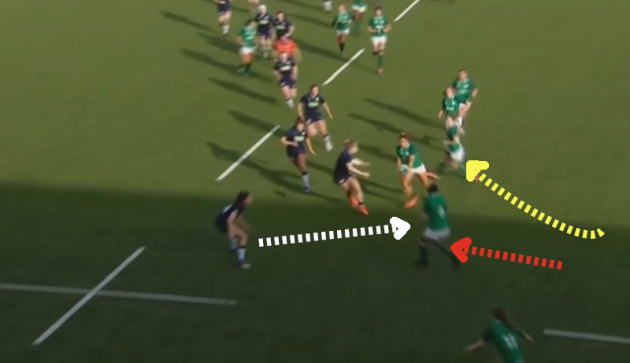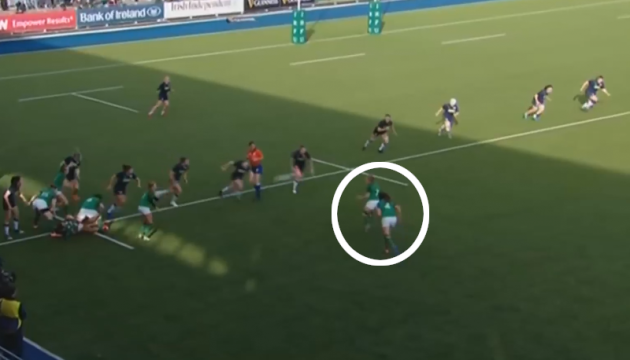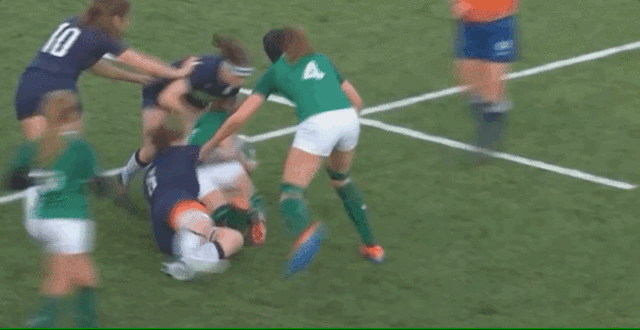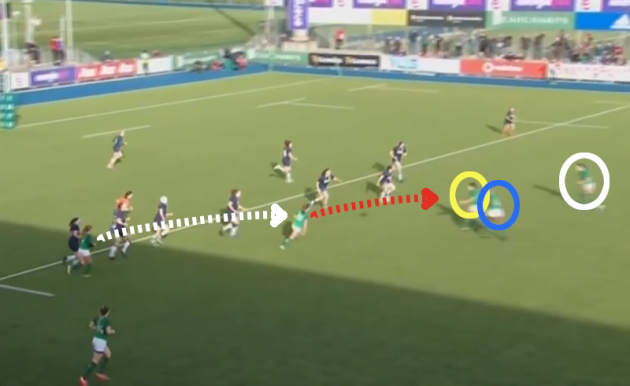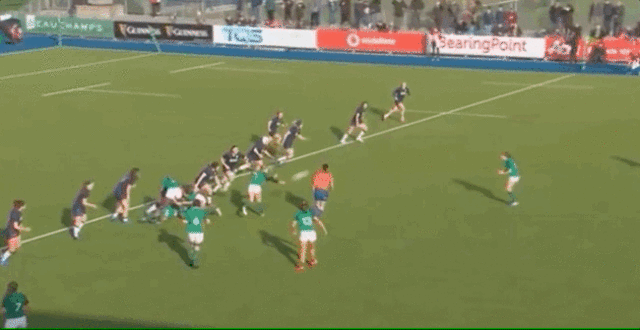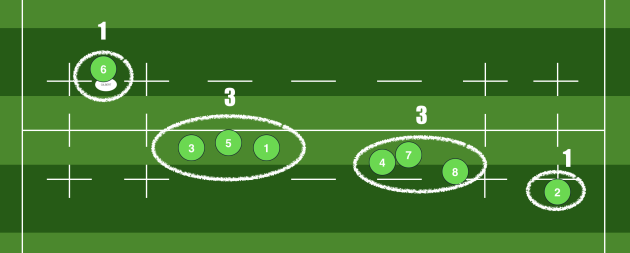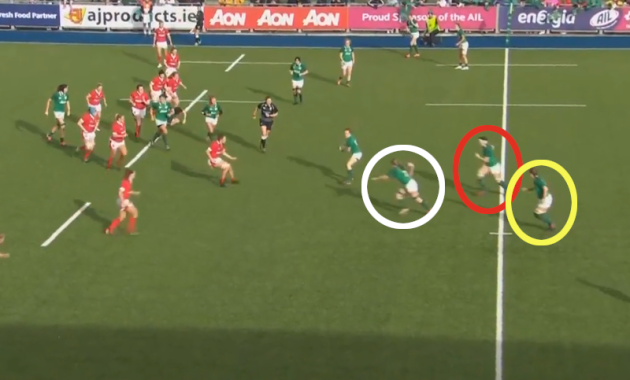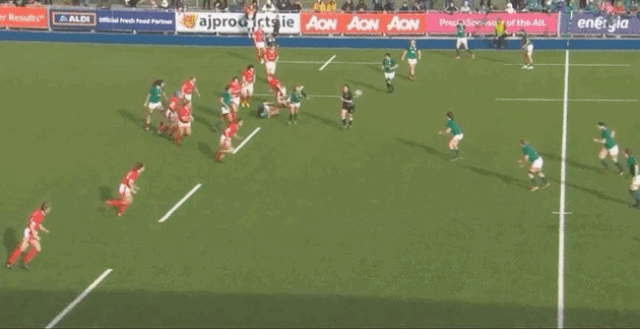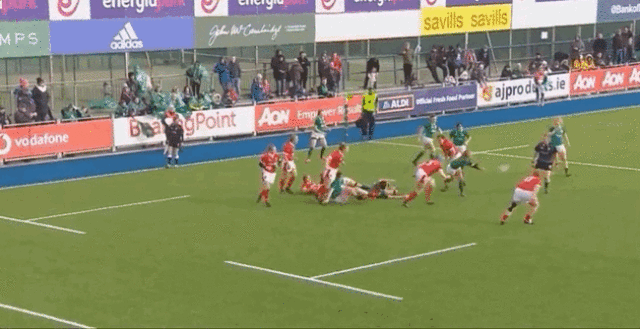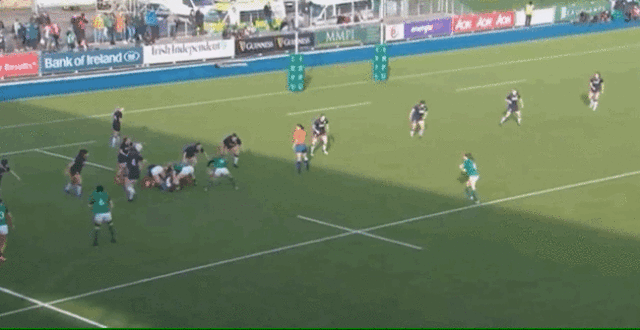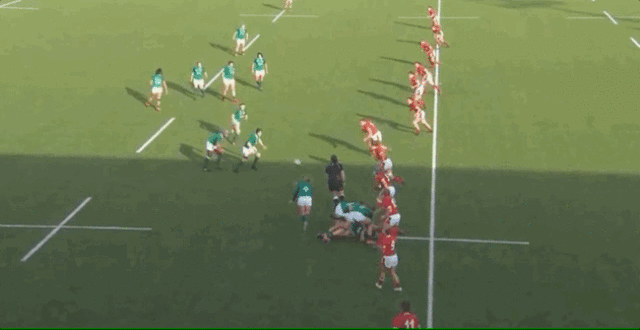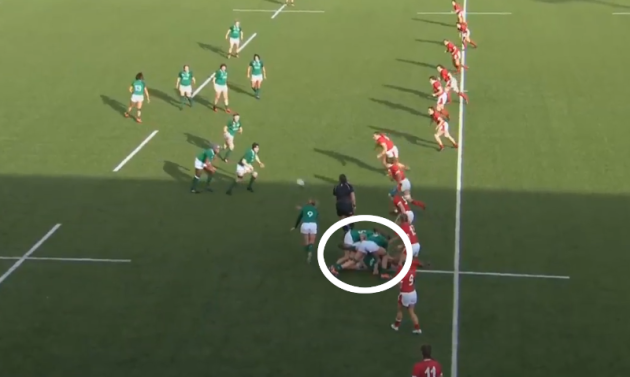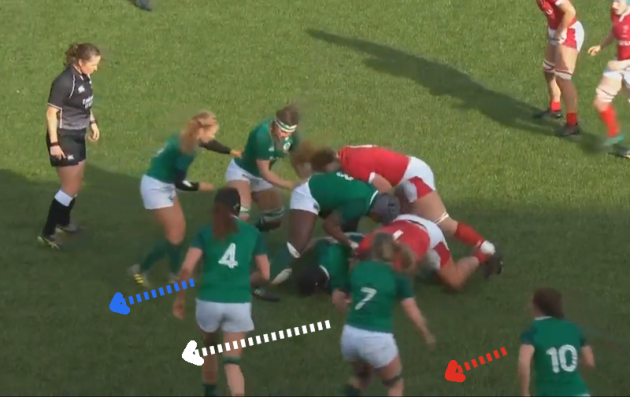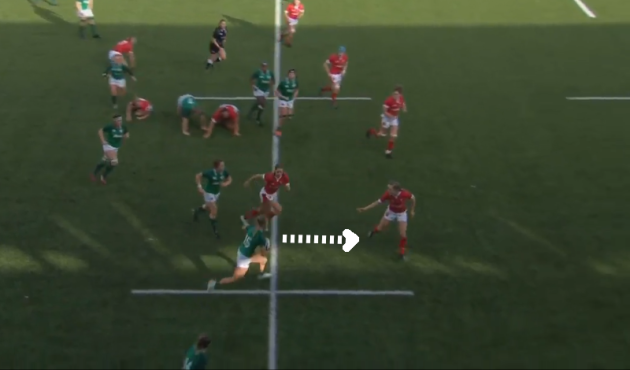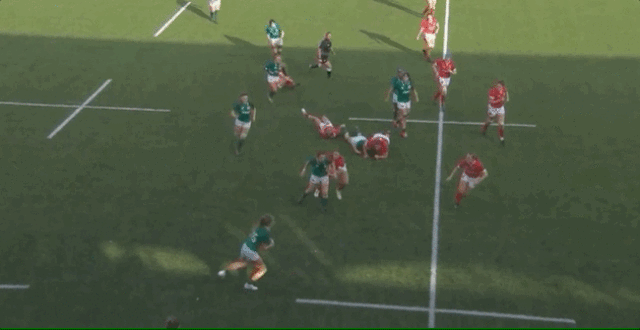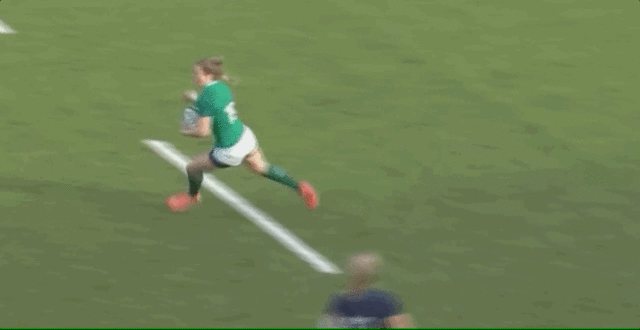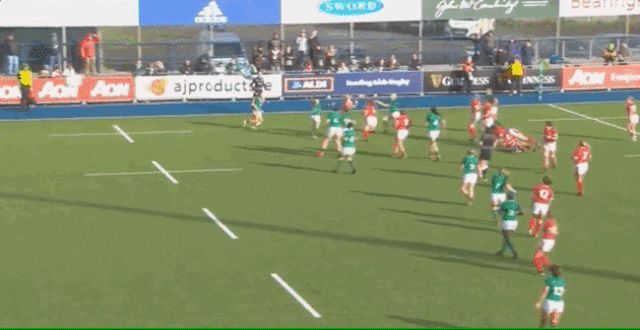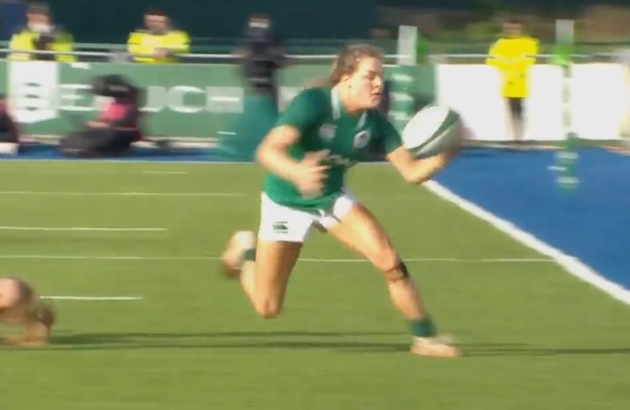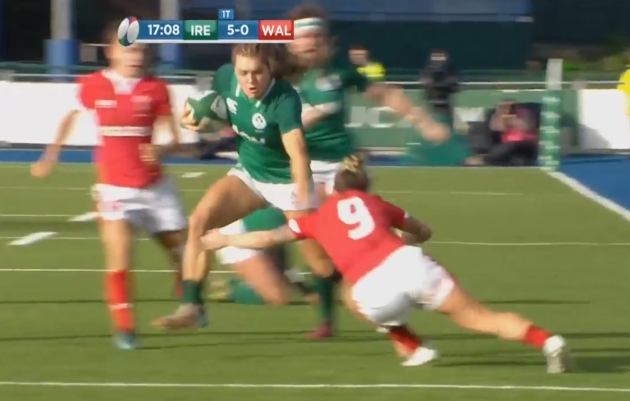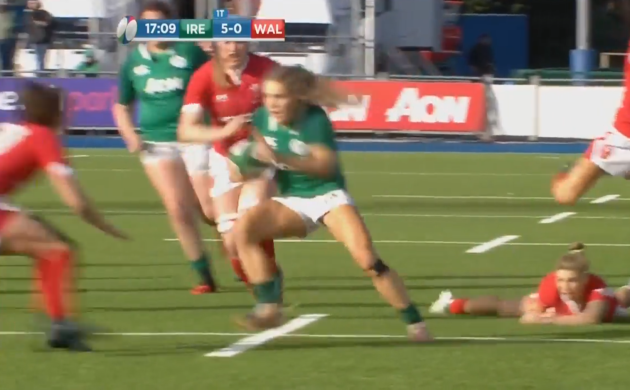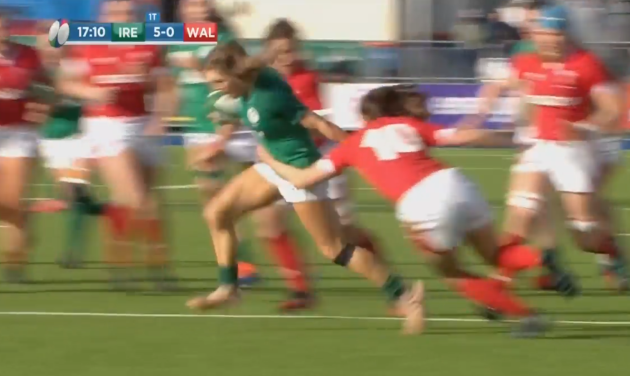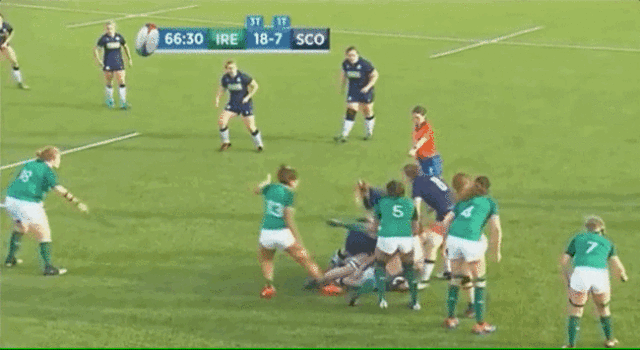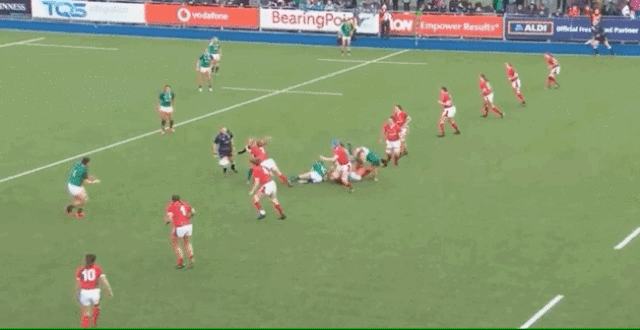ENGLAND’S 53-0 HAMMERING of Scotland yesterday was a reminder to Ireland that the toughest task is yet to come in this year’s Women’s Six Nations.
A trip to Castle Park in Doncaster awaits in two weekends’ time when Ireland will be severely tested by the English, who also won away in France in round one.
But Adam Griggs’ side have made an encouraging start to the championship, with wins over Wales and Scotland in Donnybrook leaving them joint-top of the table, trailing England only on points difference.
The reality is that England and France are a tier above the rest of this Six Nations, so it has been highly pleasing for Ireland to start the battle of the teams below with two wins on home soil, both of which saw them play entertaining and effective attacking rugby.
Ireland’s skill levels and ambition appear to have shifted up several gears, which is crucial in 2020. In September, Ireland will take on Scotland, Italy and one other nation in a qualifying tournament to secure a place at the 2021 World Cup in New Zealand.
So far in this Six Nations, there are many reasons for Ireland supporters to be enthusiastic. An Irish squad combining some experienced heads with a couple of exciting youngsters has made a good start.
As a collective, Ireland’s attacking rugby has been sharp, bringing them eight tries in two games, including a sensational five-phase team score originating from a lineout 35 metres from the Scotland tryline.
Ireland start the attack with a four-woman lineout, won by influential lock Aoife McDermott, who is lifted by Anna Caplice and Lindsay Peat after Nicola Fryday has dummied to the front.
It’s a clean lineout win and McDermott plays the ball off the top to scrum-half Kathryn Dane, who hits inside centre Michelle Claffey for a direct carry.
As we can see below, tighthead prop Linda Djougang [red] and Fryday [yellow], coming from the lineout, clear out over Claffey, while Caplice also arrives at the breakdown after lifting McDermott.
Ireland attack wide to the left on third phase, with Dane and out-half Ellen Murphy getting the ball into outside centre Sene Naoupu’s hands nice and early.
Naoupu’s playmaking on the ball is superb.
[Click here if you cannot view the clip above]
Loosehead prop Lindsay Peat runs a decoy line in front of Murphy initially, while openside flanker Edel McMahon is set up to the inside of Naoupu.
As Naoupu gets on the ball and moves cross-field, we see fullback Lauren Delany cut underneath her on a switch line [yellow below], while Ireland blindside flanker and captain Ciara Griffin runs a direct line [red] outside Naoupu.
All of these decoy lines are vital in narrowing the Scotland defence and, crucially, Griffin attracts Scotland right wing’s to bite in on her [white above].
That leaves 18-year-old Beibhinn Parsons in space wide on the left and Naoupu finds her with a superb skip pass. The electric Parsons offloads back to Naoupu, who powers forward, cleverly wriggling along the ground to buy a few more inches and prevent Scotland from getting hands onto the ball as they jackal. Ireland’s work on the ground post-tackle has been strong over the last two weekends.
Next, Dane plays the ball back infield to a two-woman pod of McMahon and McDermott, who has come from the lineout.
Having only two players in a pod carrying off the touchline is very unusual, and a perfect opportunity for Scotland to steal possession back at the breakdown.
But McDermott makes a superb clearout as McMahon shows her fight on the ground after carrying.
[Click here if you cannot view the clip above]
On phase four, Dane hits Murphy with a superb long pass [white below] and the Ireland out-half, in turn, gets width on her own pass [red] to a pod of three forwards.
Peat [yellow above] carries in this instance, with Djougang [blue] and Fryday [white] hitting the ruck.
The width Ireland get on this phase is important, as it makes life difficult for Scotland as they try to fold around to the far side of the ruck.
They’re left narrow again and more excellent passing from Ireland takes advantage of the chance.
[Click here if you cannot view the clip above]
Dane hits Murphy and the out-half delivers the ball out in front of Claffey, who shifts it smoothly on to Caplice.
Caplice gets outside a defender before delivering a pass to hooker Molony – who has held her width out in the 15-metre channel since throwing into the lineout.
As Molony thunders forward, she has Ireland wing Aoife Doyle outside her but instead hangs onto the ball as Scotland’s left wing sits off to mark up on Doyle.
Moving at speed, Molony finishes emphatically through the final two despairing Scotland defenders to seal a score that has seen every single Irish player involved, whether on the ball or off it.
Ireland have been playing with a 1-3-3-1 attack shape in this Six Nations, which essentially explains how their forwards set up across the width of the pitch, aiming to ensure Griggs’ team can threaten out wide, have resources to hit rucks in every area, and potentially create mismatches in wide channels.
Ireland appear to be very fluid in terms of which players fill which roles within their shape, so the template above is simply to illustrate roughly how the forwards will set-up across the pitch.
Importantly, the players are clearly not under strict obligation to slavishly stick to being in a perfect 1-3-3-1 at all times in attack.
In essence, Ireland are looking to get more from their forwards within this attack shape, which is merely a framework to allow players to show their skills.
It appears that Griggs and his coaching team have encouraged the forwards’ interplay within their three-woman pods.
We get an excellent example against Wales below. As they build their attack from an initial kick return by fullback Eimear Considine, out-half Claire Keohane has a pod of three outside her.
McMahon [white] is calling for the pass from Keohane, as Caplice [red] and loosehead prop Laura Feely [yellow] arrive to complete the pod.
Bursting onto Koehane’s pass, McMahon shows superb skill to offload to Caplice.
[Click here if you cannot view the clip above]
Caplice’s support line to the outside is intelligent and we can hear her over the ref mic communicating to McMahon.
Having breached the Welsh, Ireland play one more phase to the left and then, in their 1-3-3-1 shape, get the ball all the way across to the right-hand side of the pitch over the next three phases.
As they bounce back infield off the right-hand side, more neat interplay between forwards ends with Djougang finishing in spectacular fashion.
[Click here if you cannot view the clip above]
The skillful Peat and Djougang are in a two-woman pod outside Keohane in this instance and Peat shows her awareness to offload to Djougang as she is tackled.
The finish from Djougang is superb as she blasts through three Welsh defenders, showing great fight and balance.
Ireland have offloaded 24 times in their two games, underlining how keen they are to keep the ball alive in contact.
We have also seen some nice pre-contact interplay from Ireland in their three-player pods off 10, with one example against Scotland below.
[Click here if you cannot view the clip above]
McMahon throws the tip-on pass here and Caplice outside her does an excellent job of timing her run from deeper and wider, cutting back against the grain of Ireland’s passing to find a weak shoulder and barrel over the gainline.
Ireland’s attacking prowess hasn’t all been about playing phases from one side of the pitch to the other within their shape.
As we saw against Wales last weekend, they are also keen to threaten by bouncing back into the shortside when it’s on.
This example starts with Dane passing infield for Griffin to carry.
[Click here if you cannot view the clip above]
Wales make a dominant tackle but even before Griffin’s carry, Ireland are already setting up to catch the visitors back where they’ve just come from.
As Dane passes infield, McMahon, Keohane, McDermott, and Considine are all in the ruck circled below.
As Griffin carries, with Djougang and Caplice clearing out, Considine has worked back out towards the right touchline, while McDermott [blue below], McMahon [white], and Keohane [red] are also reloading on that side of the ruck.
Wales are caught numbers down in defence as Dane cleverly picks and takes two steps to draw in the pillar defender before passing to McMahon.
The Ireland flanker attacks the exposed inside shoulder of Wales’ scrum-half before offloading to Keohane, who slickly shifts the ball across her body to Considine.
Ireland’s fullback, always so composed on the ball, is now outside Wales’ left wing and she then does a superb job of feinting to the inside shoulder of the Welsh 13 and running straight to fix her, preserving the space for Delany on the outside.
As Considine draws in the defender and finds Delany, the Ireland right wing has just about enough space and time to swerve infield aggressively, beating the advancing Wales fullback and taking advantage of the lack of another backfield defender to score.
[Click here if you cannot view the clip above]
Ireland have shown some glimpses of an effective kick-return game in the two opening games of this championship.
Considine is always dangerous in the 15 shirt and returned from injury last weekend to make a scything break against the Welsh on kick return, while Delany – who moved from 15 to 14 for the Wales game – delivered a big break against the Scots.
[Click here if you cannot view the clip above]
Again, there is more evidence of Ireland’s offloading mindset here as Delany finds Dane, who hits Djougang, who flings the ball back infield for Naoupu to make further gains.
This break should end in an Ireland try over on the right-hand side – which would probably have put the Scotland game to bed on an 18-0 or 20-0 scoreline at the half-time break – but Ireland waste a two-woman overlap.
Of course, Ireland have also benefited from two sensational tries by 18-year-old wing Parsons in their opening two games.
Her sublime effort last weekend changed the game after Ireland had spent most of the early exchanges defending in their own half.
[Click here if you cannot view the clip above]
Wales’ attempt to box kick clear catches in the wind and Parsons reacts sharply to the bouncing ball close to the left touchline…
She gathers the ball and rapidly slaloms back infield and past Wales’ scrum-half, firing out a left-handed fend as she goes…
Wales’ out-half is in behind but Parsons shows brilliant footwork to beat her, stepping viciously off her left foot…
And again using that left-handed fend in case the Welsh defender can cling on…
Parsons’ power and pace take her past the attempted tackle and she instantly gets into her sprinter’s stride to take her clear. The two-handed finish is calm and collected.
A week before, the Ballinasloe RFC flyer’s vital intercept try against Scotland came as a huge relief to Ireland.
With Ireland’s remarkably poor discipline meaning the Scots were still well in the game at 13-7 and battering their tryline, Parsons came up with a huge play.
[Click here if you cannot view the clip above]
It’s brave and decisive intervention from Parsons on the edge of Ireland’s defence as she is faced with a Scottish overlap.
This close to the tryline, Parsons can’t afford to sit off and look to jockey out to the final attacking player. There’s obviously risk involved and Scotland could have floated a pass over her head, but she has little choices here. Parsons’ timing and acceleration into the intercept are exemplary.
Again, she tucks the ball into her right hand and gets up to top speed in the blink of an eye, taking her clear from over 90 metres out for her first Test try.
Parsons isn’t the only youngster impressing for Ireland.
20-year-old second row Judy Bobbett made her Six Nations debut last weekend and delivered a big work-rate with 18 carries and 14 tackles.
Bobbett, who started playing with Ashbourne RFC and is now with Blackrock, also showed skill in the instance below, collecting a tricky pass and tipping-on to Caplice.
[Click here if you cannot view the clip above]
After being tackled, Caplice – who has been brilliant for Ireland in this Six Nations – shows her smarts by releasing the ball, getting back to her feet, and carrying again, James Lowe-style.
Meanwhile, 19-year-old back row Dorothy Wall has won her first two caps off the bench in this championship, offering real impact.
Having made a remarkable 20 tackles in her 40 minutes off the bench on debut against Scotland, Wall – who began playing in Fethard RFC and is now with Railway Union – produced this big linebreak against the Welsh.
[Click here if you cannot view the clip above]
For Ireland to have promising, skillful and physical young players emerging is exciting.
Collectively, Ireland’s opening two games in this championship have been encouraging, even if there is real room for improvement. They must keep pressure on themselves to continue their progress.
Conceding 24 penalties in two games - 16 of them against Wales – is concerning, while their largely aggressive and combative defence has occasionally switched off to damaging effect.
For Ireland’s pack to end the win over Wales with a penalty try at the scrum is a timely confidence boost ahead of the expected challenge at set-piece time in England in round three.
They will need something special to pull off a big shock win against the English next time out, but after a miserable 2019 Six Nations, Ireland Women have started their 2020 campaign in promising fashion.
